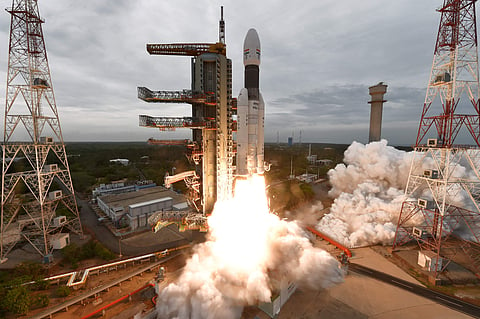

BENGALURU: The Indian Space Research Organisation (ISRO) is likely to exchange notes with Israel’s SpaceIL, which lost its robotic lunar lander on April 11, 2019, in a manner similar to Chandrayaan-2’s lander Vikram, just five months earlier.
At least two ISRO scientists familiar with the space agency’s plans told The New Indian Express that after ISRO’s failure analysis committee concludes its inquiry into how and why lander Vikram lost the communication link with the master control room, ISRO and SpaceIL plan to put their heads together and exchange notes to pinpoint common factors in the powered descent of both the landers which caused them to lose communication links in the last few moments of the landing process.
SpaceIL’s Beresheet mission entailed sending a robotic lander to the moon. It was launched on February 22, 2019, onboard SpaceX's Falcon 9 rocket.
Had Bereshet successfully landed on the moon, it would have been Israel, and not India, to be the fourth country to land its probe on the lunar surface after the US, Russia and China.
After having completed the Earth-bound orbits for over a little more than a month and entering the lunar orbit, things started going wrong for Beresheet when it began the descent.
According to Beresheet mission operation control director Alex Friedman, just as the powered landing began, the speed-breaking thrusters came on to reduce the velocity of the spacecraft.
But the sensors-installed star-tracker of the Beresheet lander was blinded by the Sun’s glare, causing it to lose its orientation as the gyroscope engine -- that autonomously controlled the speed and direction -- failed.
The star-tracker helps spacecraft orient themselves autonomously by using the coordinates of stars that are relatively constant while they travel through space.
When the Sun’s glares blinded the Beresheet’s sensors, the system lost track of the positioning of stars, sending the craft into a hurl.
The engine is said to have come on again after a while, but instead of decelerating, it accelerated the lander, sending it hurtling towards the lunar surface, crashing into it at a speed of 500 kmph on April 11, 2019.
ISRO is seeking to find out more about the manner in which the sensors behave during the descent towards the lunar surface.
“We do not know exactly what we are going to find, but there is a possibility that something common has occurred in both (Chandrayaan-2 and Beresheet) landing operations going awry,” said one of the scientists.
Incidentally, Beresheet carried a Lunar Library, which the Israeli scientists hope has survived the crash.
This library contains human history in digital form spread over 30 million pages, besides a sample of the Bodhi tree from India, Indian music and material in Hindi and Urdu.
Interestingly, the Israelis also loaded the library with tardigrades, which are known to be the toughest living organisms on earth -- measuring one millimetre each -- to see whether they can survive the lunar environment.
They hope these have survived too.